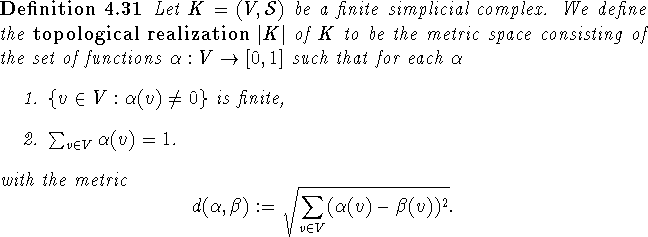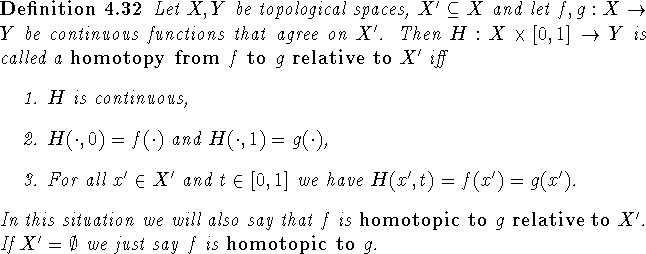
Theorem 4.25 can be viewed as a homological analogue of Theorem 3.4. Since the assumptions only require that the retraction is a weak retraction, it is now natural to look for conditions that ensure the existence of such a weak retraction. Most of the work in that direction has been done by Constantin and Fournier in [18]. The connection to topology is established through the topological realization of a simplicial complex:
Clearly the topological realization of a finite simplicial complex
can be embedded as a subspace in ![]() with the
usual topology.
Simplicial maps are extended to affine maps by affine interpolation.
with the
usual topology.
Simplicial maps are extended to affine maps by affine interpolation.

![]()

![]()
From Lemmas 4.22 and 4.24
we can easily infer that if ![]() is a
weak retract of |P| and
is a
weak retract of |P| and ![]() is acyclic, then
is acyclic, then ![]() .
This can be seen as an underlying fact to the
work in [18] in which contractibility
(through Proposition 4.39)
plays a central role.
.
This can be seen as an underlying fact to the
work in [18] in which contractibility
(through Proposition 4.39)
plays a central role.
Proof:
The homotopy of ![]() to a retraction onto
to a retraction onto
![]() relative to
relative to
![]() is constructed as follows:
Let
is constructed as follows:
Let ![]() and
let
and
let ![]() be a contraction.
Then for each point
be a contraction.
Then for each point ![]() there
are unique
there
are unique ![]() and
and ![]() such that
such that
![]() and
and
![]()
is a (strong) deformation retraction from |K| to
![]() .
\
.
\

For any finite ordered set all the properties below make sense. They are listed such that the lower-numbered properties imply the higher-numbered ones. Similar lists can be made up for graphs and simplicial complexes.
``P is connectedly collapsible" fits in between conditions 1 and 2 (cf. [122]).